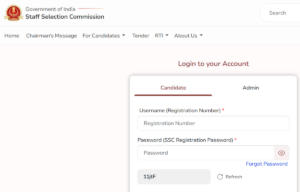Daily Current Affairs for UPSC 2023
Q) Which one of the following statements is not correct about Participatory Notes (P-Notes)?
- They are issued by foreign portfolio investors.
- It allows purchase of Indian equity without registering with SEBI.
- P-Notes are considered offshore derivative investments.
- The value of P-Notes investments in India has been decreasing.
Daily Current Affairs for UPSC – 30 May April 2023
Explanation:
- Option (1) and (2) correct: Participatory Notes (P-Notes) are financial instruments required by investors or hedge funds to invest in Indian securities without having to register with the Securities and Exchange Board of India (SEBI). Investors save time, money and scrutiny associated with direct registration. P-notes are issued by registered Foreign Portfolio Investors (FPIs) to overseas investors who wish to be a part of the Indian stock market without registering themselves directly
- Option (3) is correct: P-Notes are among the group of investments considered to be Offshore Derivative Investments (ODIs). The P-Notes include investments in equity, derivatives, debt and other hybrid instruments. Majority of the investments is in the equity space. P-notes can be easily traded in foreign countries via endorsement and delivery. They are well known as investors, and hedge funds can enter Indian markets anonymously and go about their operations.
- Option (4) is incorrect: According to recent SEBI data, the value of Participatory notes (P-notes) investments in Indian markets-equity, debt, and hybrid securities-stood at Rs 95,911 crore at the end of April as compared to Rs 88,600 crore in March-end.
Q) With reference to ‘monsoon’, consider the following statements:
- The presence of a high-pressure area near Madagascar helps in the dispersal of monsoon winds.
- A monsoon trough is a low-pressure area that is created due to the movement of the inter-tropical convergence zone.
- The shift of the easterly jet stream to the north of the Himalayas helps in the arrival of monsoonal winds.
Which of the statements given above is/are correct?
- 1 and 2 only
- 2 only
- 1 and 3 only
- 1, 2 and 3
Explanation:
- Statement 1 and 3 are incorrect: Monsoon is a seasonal reversal of winds that brings moisture-laden winds to the Indian sub-continent, causing rainfall. It can also be described as seasonal changes in atmospheric circulation and precipitation due to annual latitudinal oscillation of the Inter Tropical Convergence Zone (ITCZ) between north and south of the equator. Mascarene high is the presence of this high pressure area near Madagascar that helps in dispersal of moisture laden winds towards Indian sub-continent. Shift of westerly jet stream to the north of the Himalayas creates the requisite temperature for arrival of monsoonal winds.
- Statement 2 is correct: Monsoons are influenced by topography. The Western side of the Western Ghats receives heavy rainfall whereas the eastern side is deficient. Monsoons in India have typically a fixed schedule. It usually begins by June first week and ends by September. Northward shift of Inter-tropical convergence zone (ITCZ) over north and northwest India creates a low pressure area known as monsoon trough.
Q) Consider the following statements about Held-to-Maturity (HTM) Securities:
- Stocks are also considered as a type of held-to-maturity securities.
- They have a pre-determined payment schedules and maturation dates.
- As per the IMF, banks in India and Bangladesh do not offer HTM securities.
Which of the statements given above is/are correct?
- 1 and 2 only
- 1 and 3 only
- 2 only
- 1, 2 and 3
Explanation:
- Statement 1 and 3 are incorrect: Held-to-Maturity (HTM) securities are bought by businesses with the intent to hold them until maturity are known as Held-to-Maturity (HTM) securities. They differ from trading securities or securities open for sale as they are not held until maturity. Debt instruments such as corporate or government Bonds typically make up the investments. Stocks aren’t considered HTM securities as they lack a maturity date. According to Moody’s Investors Service, banks in Bangladesh, China, India, Mongolia, the Philippines, and Taiwan, hold sizable volumes of HTM (held to maturity) securities.
- Statement 2 is correct: The most popular HTM investment types are bonds and other debt instruments. Held-to-Maturity (HTM) securities are bought to be held until the maturity period and have predetermined payment schedules and fixed dates of maturation.
Q) With reference to ‘Beluga Whale’, consider the following statements:
- They are most commonly found in tropical waters.
- These whales are also found near river mouths.
- It is categorized as ‘near threatened’ in the IUCN red list of species.
Which of the statements given above is/are correct?
- 1 and 2 only
- 2 and 3 only
- 1 and 3 only
- 1, 2 and 3
Explanation:
- Statement 1 is incorrect but statement 2 is correct: Belugas are also called white whales, and their unusual colour makes them one of the most familiar and easily distinguishable of all the whales. Belugas can produce a series of chirps, clicks, whistles and squeals, which give the beluga its other name, “the canary of the sea.” They can grow up to 6 m long, and are related to dolphins. These whales are common in the Arctic Ocean’s coastal waters around Greenland, Norway and Russia, though they are found in subarctic waters as well. They can also be found near river mouths and sometimes even venture up river.
- Statement 3 is correct: Arctic belugas migrate southward in large herds when the sea freezes over. Recently, Hvaldimir, the beluga whale, was spotted off the Swedish coast. It was first spotted off the coast of Norway in 2019 wearing an alleged Russian spy camera. IUCN has listed Beluga whales as Near Threatened in its red list.
Q) Consider the following statements about ‘Evergreening of loans’:
- This practice prevents an account from turning into a non-performing asset.
- Evergreening of loans is responsible for causing crowding-out effect in the economy.
Which of the statements given above is/are correct?
- 1 only
- 2 only
- Both 1 and 2
- Neither 1 nor 2
Explanation:
- Statement 1 is correct: Evergreening of loans is a form of zombie lending that acts as a temporary fix for the bank. It prevents an account from turning into a non-performing asset (NPA), thus impacting their profitability. Banks usually dress up bad loans and provide additional funds to companies who don’t have the capacity to repay. Evergreening usually takes place due to the unholy relationship between bankers and borrowers.
- Statement 2 is correct: RBI Governor has raised red flags against innovative methods employed by banks for evergreening of loans. Evergreening of loans leads to crowding-out effect where credit is being diverted to weak entities without creation of any assets. Good borrowers will be excluded from credit for expanding their business.


 SSC CGL Apply Online 2024, Last Date is ...
SSC CGL Apply Online 2024, Last Date is ...
 SSC Stenographer 2024 Notification Out a...
SSC Stenographer 2024 Notification Out a...
 IB SA MTS Final Result 2024 Out at mha.g...
IB SA MTS Final Result 2024 Out at mha.g...

















